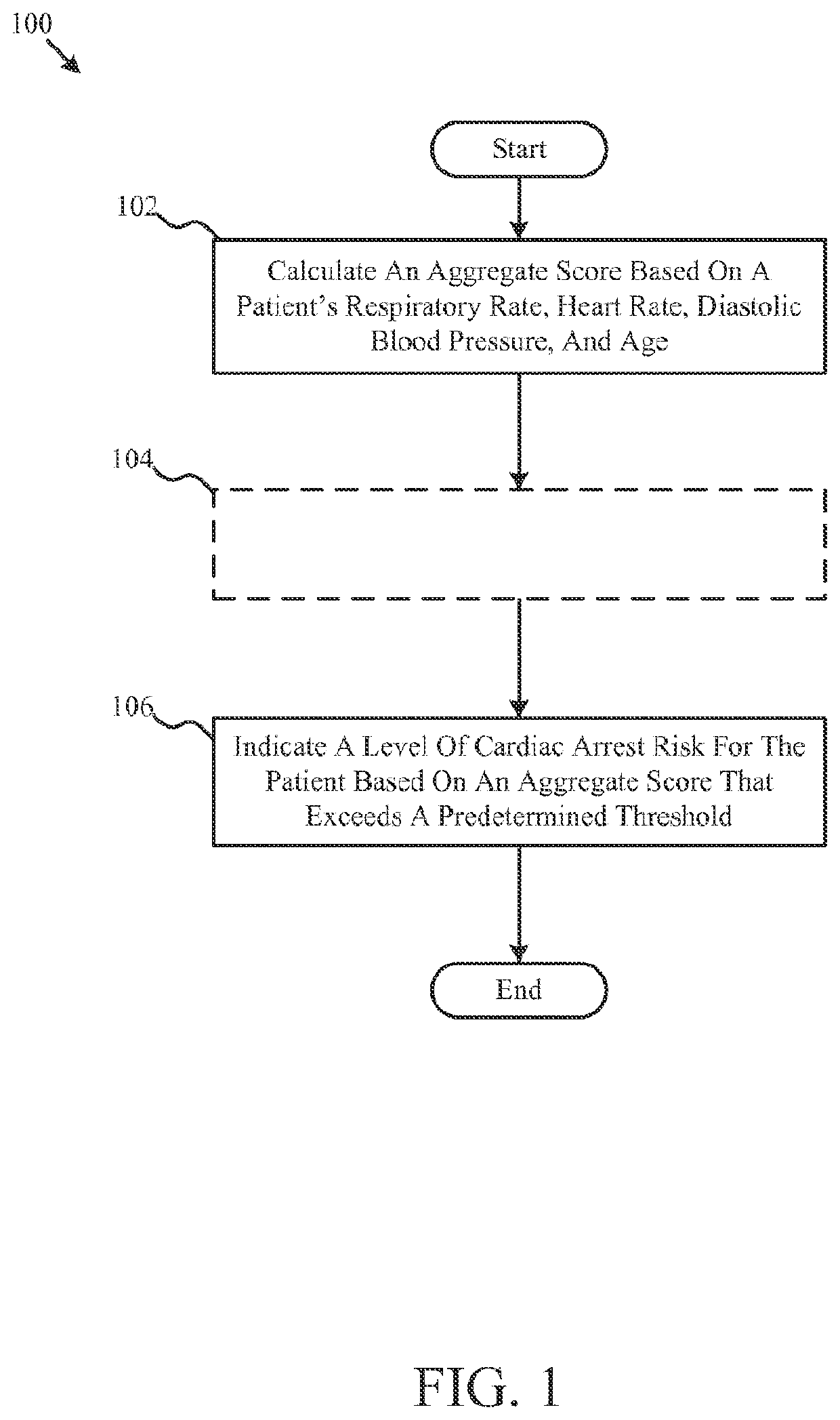Patient risk evaluation
a risk evaluation and patient technology, applied in the field of patient risk evaluation, can solve the problems of not being able to demonstrate a consistent improvement in hospital-wide clinical trials have not shown a consistent improvement in ca rate or mortality, and patients are often missed or not acted on appropriately
- Summary
- Abstract
- Description
- Claims
- Application Information
AI Technical Summary
Benefits of technology
Problems solved by technology
Method used
Image
Examples
examples
[0103]The following describe scenarios that may be used with various embodiments of the disclosed invention. These examples are not intended to be limiting, but rather to provide specific uses for different embodiments of the disclosed invention.
Cardiac Arrest Risk Evaluation
[0104]Models for predicting a patient's cardiac risk were statistically derived. The prediction model derives a cardiac arrest risk triage (CART) score to predict cardiac arrest (CA) of a patient, and actions to treat the patient may be taken based on the CART score, for example, triggering a rapid response team (RRT). The CART score model was compared to the Modified Early Warning Score (MEWS), a known RRT activation criterion. The CART score model was validated by comparing its ability to identify patients transferred to the intensive care unit (ICU) to the MEWS.
1. Patient Data
[0105]The study was conducted at an academic, tertiary care hospital with approximately 500 inpatient beds. Demographic data for all pa...
PUM
 Login to View More
Login to View More Abstract
Description
Claims
Application Information
 Login to View More
Login to View More - R&D
- Intellectual Property
- Life Sciences
- Materials
- Tech Scout
- Unparalleled Data Quality
- Higher Quality Content
- 60% Fewer Hallucinations
Browse by: Latest US Patents, China's latest patents, Technical Efficacy Thesaurus, Application Domain, Technology Topic, Popular Technical Reports.
© 2025 PatSnap. All rights reserved.Legal|Privacy policy|Modern Slavery Act Transparency Statement|Sitemap|About US| Contact US: help@patsnap.com



